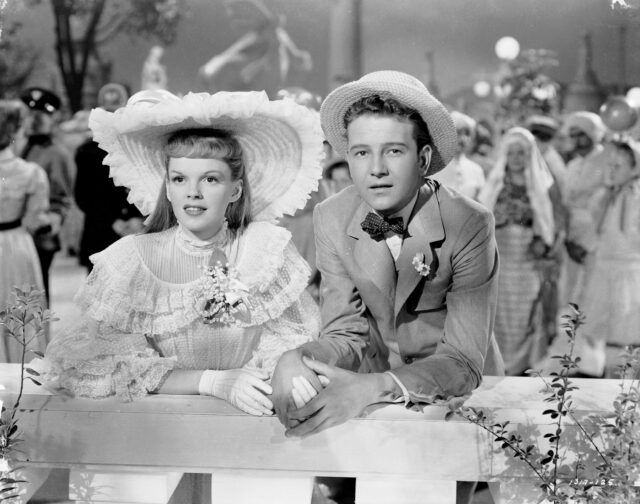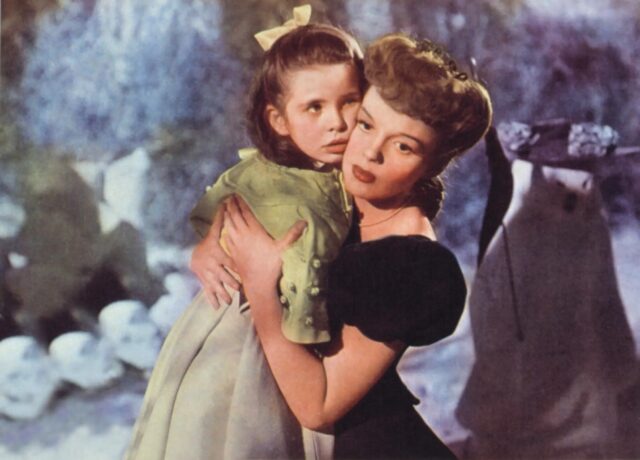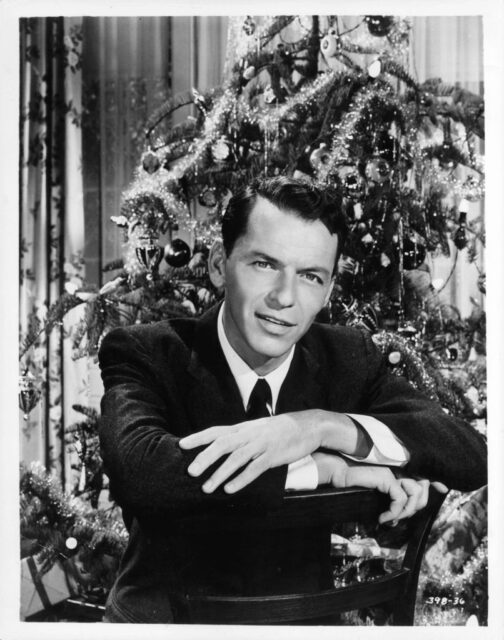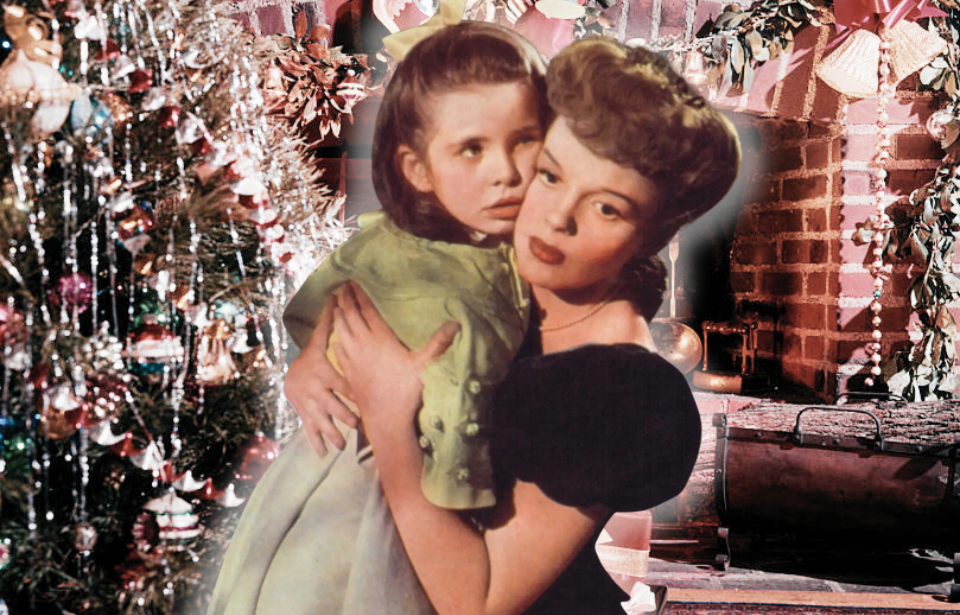“Deck the Halls” and “Jingle Bells” are swell Christmas songs, but the best classics have a warm fuzzy, almost wistful quality to them. There’s “I’ll Be Home for Christmas,” “White Christmas” and, arguably, the greatest of them all: “Have Yourself a Merry Little Christmas.” What many may not know is that the latter song originally had a different set of lyrics and was something of a Yuletide downer, to put it mildly.
Meet Me in St. Louis (1944)

“Have Yourself a Merry Little Christmas” was penned by Hugh Martin and Ralph Blane for the 1944 MGM musical film, Meet Me in St. Louis, starring Judy Garland. The plot: a family is saddened to learn they’ll be moving to New York City after their father gets a promotion and will have to leave their beloved St. Louis home just before the Louisiana Purchase Exposition is about to hit town.
In a three-hanky scene set on Christmas Eve, Garland’s character, Esther Smith, sings the ballad to cheer up her heartbroken little sister, Tootie, played by the tear-making machine that was five-year-old Margaret O’Brien.
The original lyrics to ‘Have Yourself a Merry Little Christmas’

Take a look at some of the less-than-lighthearted lyrics Hugh Martin and Ralph Blane composed for “Have Yourself a Merry Little Christmas” before filming began for Meet Me in St. Louis:
“Have yourself a merry little Christmas / It may be your last / Next year we may all be living in the past / Have yourself a merry little Christmas / Pop that champagne cork / Next year we may all be living in New York / No good times like the olden days / Happy golden days of yore / Faithful friends who were dear to us / Will be near to us no more / But at least we all will be together / If the Lord allows / From now on, we’ll have to muddle through somehow / So have yourself a merry little Christmas now.”
According to Hollywood lore, Judy Garland thought the song was too sad and asked Martin to lighten it up a little. He initially refused, but the actress stood firm, telling him, “Margaret will cry, and they’ll think I’m a monster!”
The composer finally caved, coming up with new, less depressing, lyrics. “Have yourself a merry little Christmas / It may be your last / Next year we may all be living in the past” was changed to “Have yourself a merry little Christmas / Let your heart be light / From now on your troubles will be out of sight,” while “Faithful friends who were dear to us / Will be near to us no more” became “Faithful friends who are dear to us / Gather near to us once more.”
Meet Me in St. Louis became a big hit, and Garland’s version of the song became popular with US troops during World War II. In fact, a performance at the Hollywood Canteen, a club that entertained servicemen on their way to battle, brought many soldiers to tears. However, there wasn’t much of a commercial market for Christmas tunes at the time, so the song disappeared for a while.
‘Have Yourself a Merry Little Christmas’ becomes a holiday classic

In 1957, Frank Sinatra chose to include “Have Yourself a Merry Little Christmas” on his holiday album, A Jolly Christmas. Now, it was the crooner’s turn to request a tweak in the lyrics. He asked Hugh Martin if he could rewrite the “Until then we’ll have to muddle through somehow” line, reportedly saying, “The name of my album is A Jolly Christmas. Do you think you could jolly up that line for me?”
Not about to tangle with the mercurial chairman of the board, Martin changed the line to the decidedly happier “Hang a shining star upon the highest bough.” Smart move by Sinatra, as the upbeat version became the classic so many of us listen to and love today.
Over the years, the song has been recorded by artists as eclectic as Bing Crosby, Doris Day, Ella Fitzgerald, The Pretenders, James Taylor, Luther Vandross and heavy metal headbangers, Twisted Sister. Today, people are divided as to which version is better, and, as Martin noted, “half the people sing one line and half sing the other.”
More from us: Bah Humbug: Understanding the Strange Christmas Saying
Recently, however, some have been opting for the sadder sentiment. Taylor returned to the song’s original melancholy lyrics following the September 11th attacks, releasing it as a record later in 2001. Whichever rendition you prefer, “Have Yourself a Merry Little Christmas” remains a touching and enduring classic.
